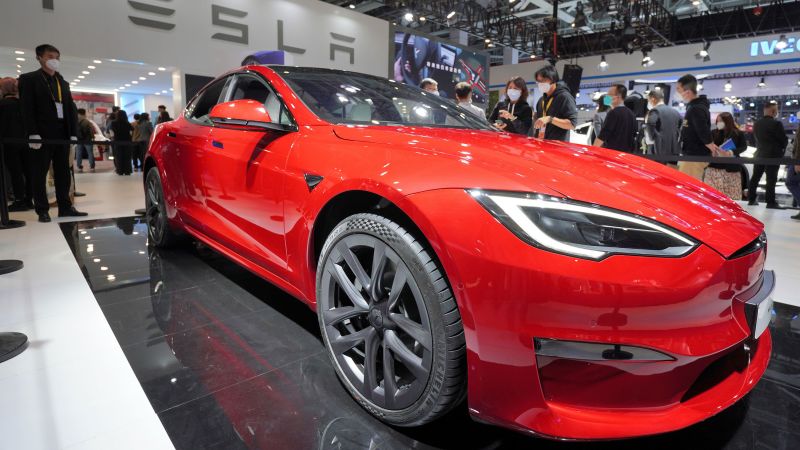Tesla, the renowned American electric vehicle manufacturer, has recently made headlines by suspending new orders for its Model S and Model X vehicles on its Chinese website. This decision, confirmed by Reuters, follows the backdrop of escalating trade tensions between the United States and China, the two largest economies in the world. The economic relationship between these nations has grown increasingly fraught, leading to a series of retaliatory measures that have now begun to impact major corporations like Tesla.
Both the Model S and Model X cars are manufactured in the U.S. and subsequently imported into China. As part of this decision, these models have also been removed from Tesla’s WeChat mini program account in China where customers often place orders. This notable shift underscores the complications that multinational companies face amid evolving international trade policies and tariffs.
While Tesla has not provided specific commentary on the reasons behind the suspension, the timing is telling. On the same day of the announcement, China implemented significant tariff hikes on U.S. imports, with some duties reaching 125%. This move came following President Donald Trump’s decision to increase tariffs on Chinese goods to 145%. Such interplay of tariffs not only heightens the costs associated with importing goods but also complicates the pricing strategy for companies like Tesla, which are already navigating a sensitive market environment.
The ramifications of these increased tariffs are substantial, particularly for Chinese consumers who may find imported vehicles increasingly unaffordable. The result is a significant increase in the retail cost of Tesla’s models, making them less competitive compared to locally produced electric vehicles. The growing affordability of domestic alternatives will likely lead potential buyers to consider local manufacturers over imports, which can only contribute to diminishing sales.
Despite these challenges, Tesla appears to be minimizing its exposure to U.S.-China tariffs due to its robust domestic manufacturing capabilities. The company, based in Austin, Texas, has focused much of its production within the U.S. market, somewhat insulating itself from broader economic retaliations. Tesla’s Model 3 and Model Y are produced at its state-of-the-art facility in Shanghai, catering to both local demand as well as exports to other markets, including Europe, thereby forming a solid portion of Tesla’s overall sales figures.
The situation becomes even more complex when considering the competition Tesla faces in the Chinese market. According to analysts, in 2024, China imported only 1,553 Model X cars and 311 Model S cars. This sales volume represented a mere fraction of Tesla’s total deliveries, which exceeded 657,000 vehicles last year. The dwindling market presence of these particular models could be attributed to increasing competition from local rivals, such as BYD, a significant player in the electric vehicle space. The fierce rivalry in this landscape emphasizes the necessity for Tesla to innovate and adapt to local preferences.
Furthermore, it’s worth noting that inside the broader market context, there has been an observable decline in the category encompassing Tesla’s premium sedan and SUV models, including the anticipated Cybertruck. Reports indicate that these deliveries were down 25% in the first quarter globally, primarily due to stagnant vehicle upgrades and growing criticism of CEO Elon Musk’s political stance. This backlash may affect customer sentiment toward the brand and its products, further complicating Tesla’s efforts to maintain its market share in an increasingly competitive environment.
In summary, Tesla’s recent suspension of new orders for the Model S and Model X in China signals more than just a corporate decision; it reflects the broader implications of a charged geopolitical landscape, fluctuating tariffs, and an evolving automotive market where local competitors are gaining traction. The future for Tesla will certainly require strategic adaptations if it wishes to thrive in an atmosphere marked by intense competition and regulatory changes.



